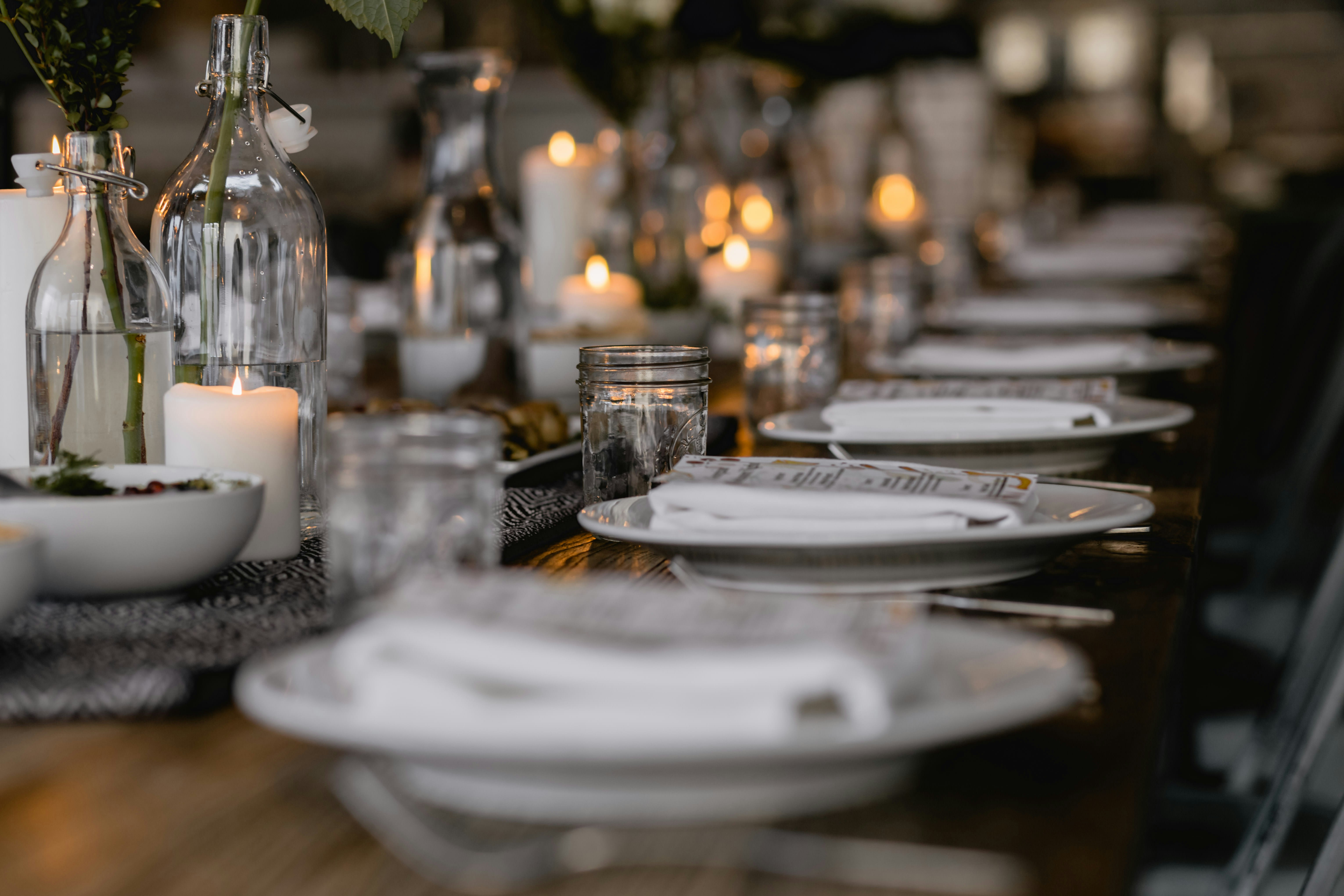Tablescapes That Spark Conversation (Not Just Photos)

A great tablescape does more than sit pretty for Instagram. It pulls people in. It gets them talking, leaning, connecting. Because yes, photos matter. Guests will snap them, post them, tag them. But the real test of a table design is whether it sparks actual conversation in the room.
And in 2025, when attention spans are thin and every event fights to be memorable, the table is prime real estate. Guests spend hours there. It’s the anchor of the night. Which means every design choice from linen to lighting to centerpieces and place settings, becomes an opportunity to shape how people interact.
Beyond the Centerpiece
For too long, table design meant “pile flowers in the middle and call it luxury.” Pretty, sure. But also predictable. Guests lean around it awkwardly to chat, and before long, the arrangement becomes more obstacle than experience.
Modern tablescapes shift the focus. They’re layered with texture, interactive elements, and intentional spacing that draw people together. Elements, like a sculptural piece that invites eye contact or unexpected objects, such as art, books, even culinary displays, spark questions and get people talking.
The best compliment isn’t “that’s gorgeous.” It’s “where did you get that idea?”
The Role of Texture
Texture is the secret weapon. Smooth glass chargers next to rough-hewn wood accents. Velvet napkin ties paired with metallic flatware. Contrasts like these don’t just photograph well—they beg to be touched. And when people reach, they comment.
Luxury planners know that when guests interact with the table physically, they break the invisible stiffness that can settle at a formal dinner. Suddenly, the environment feels more human, less staged.
Lighting at the Table
Overhead lighting sets the room’s mood, but tabletop lighting sets the intimacy.
Candles remain timeless. Try changing up how they’re used: clustered in mismatched holders, floating in shallow bowls, or paired with discreet LED accents that flicker without overheating the space. The interplay between glow and shadow creates warmth that makes conversation easier.
It’s not just about ambiance. Studies show people literally talk more freely in soft, warm light. That makes lighting design as important as the floral order.
Personalization Without Gimmicks
Corporate events especially walk a fine line. Tables should feel branded without screaming “advertisement.” The trick is subtle personalization.
Menus that double as conversation starters, maybe featuring quotes from the company’s founder or fun facts about the industry. Place cards with prompts, such as “ask me about my first job” or “biggest risk I’ve taken,” turn introductions into genuine moments.
Done right, personalization adds depth to décor and meaning to the gathering.
Breaking the Uniformity
Not every table has to look the same. In fact, variety across the room adds intrigue. One section might lean minimalist with clean lines, while another bursts with color and eclectic accents. Guests wander, compare, comment.
Think of it as conversation before guests even sit down. People arrive, notice differences, and start discussing what they prefer. That kind of organic chatter builds momentum before the program even begins.
Cultural and Culinary Layers
Another overlooked element is tying the tablescape to culture or cuisine.
If the menu is global, let the design reflect it with Moroccan lanterns, Italian ceramics, or Japanese minimalism. Guests instantly feel transported, and the table becomes part of the storytelling.
Food itself can become part of the design. Edible garnishes scattered among décor. Mini bread displays that feel sculptural. Desserts that double as centerpiece art. Guests don’t just eat. They discuss.
When It Goes Wrong
Of course, not every tablescape lands. A few recurring mistakes kill conversation instead of sparking it.
-
- Overly tall centerpieces that block sightlines.
- Décor that looks beautiful but feels fragile, so guests are scared to touch it.
- Tables so crowded with props that there’s no space for plates or glasses.
Guests might politely admire, but the vibe turns stiff. And stiff tables mean stiff conversations.
The ROI of Table Design
Why does this matter beyond aesthetics? Because conversation builds connection, and connection builds ROI.
At a gala, that means higher bids during the auction. At a conference, it means new business cards swapped. At a wedding, it means bonds that last beyond the night. Tables aren’t just décor. They’re revenue-driving spaces.
Planners who see them that way elevate their entire event.
Looking Ahead
The future of tablescapes is less about opulence, more about intention. Expect to see:
-
- Interactive tables with digital overlays guests can engage with.
- Sustainability baked into design with reusable pieces, living plants, compostable accents.
- Hyper-personalization, with tablescapes shifting to match attendee segments or even individual preferences.
The common thread? Tables that spark emotion, not just admiration.
Where to Learn From the Best
The truth is, the best tablescapes don’t come from scrolling photos. They come from walking into a room and experiencing them firsthand—seeing how they affect guests in real time.
That’s why The Event Planner Expo 2025 is the ultimate classroom. This October, planners from across the country are converging in New York to showcase, share, and dissect design strategies that actually work. You’ll hear from the industry’s most creative minds, network with peers who obsess over the details, and even get insider access to how top designers balance beauty with functionality.
And with 3,000+ event pros, 150+ exhibitors, and powerhouse speakers like Daymond John, you’ll walk away not just inspired but armed with actionable design moves you can bring straight to your next event.
Don’t just double-tap tablescapes online—get in the room. Bring your team. Go All Access at The Event Planner Expo 2025 and experience the design details that turn tables into conversation engines. Secure your tickets today.
